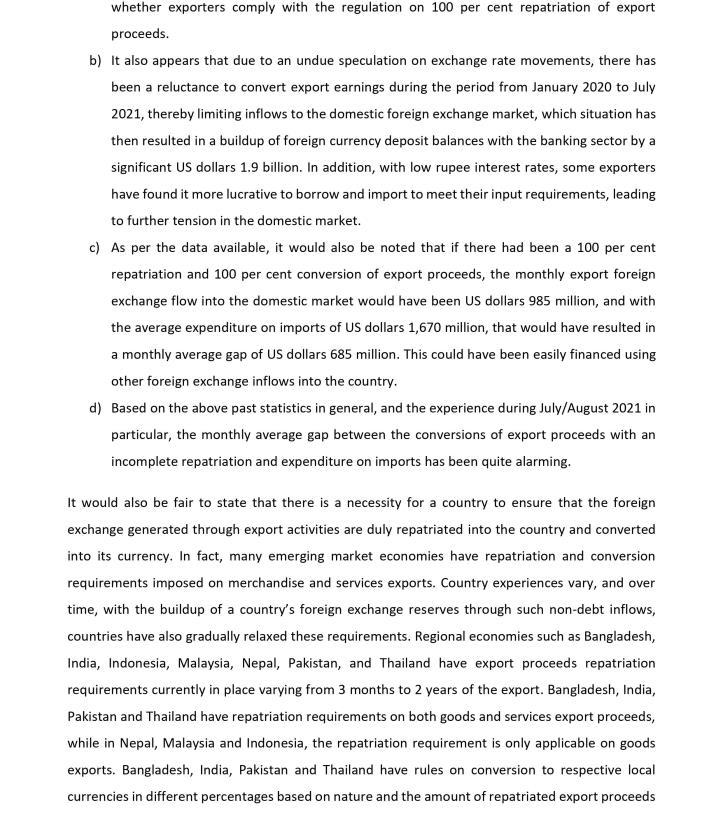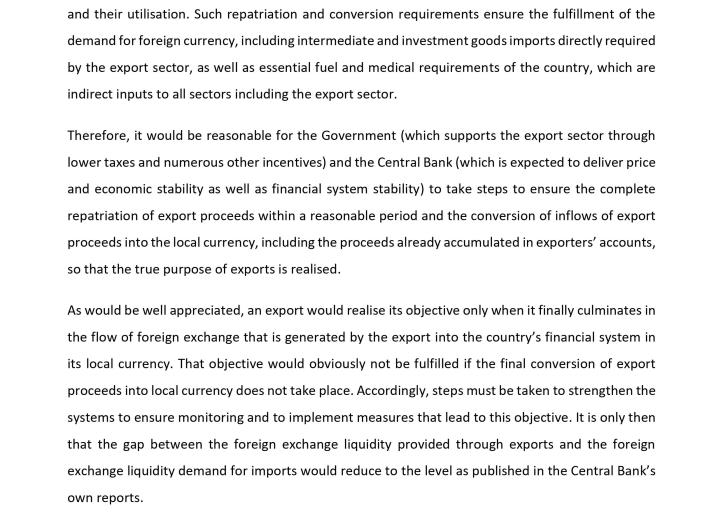September, 27, 2021

Sri Lanka’s merchandise export sector has shown a notable improvement in 2021 compared to the pandemic-affected 2020. As per the latest Customs data, export earnings have averaged US dollars 985 million during the eight months ending August 2021 compared to a monthly average of US dollars 837 million in 2020, while the average earnings have amounted to US dollars 1,064 million during June-August 2021. This is an appreciable development as the merchandise export sector (comprising diverse products) is the largest foreign exchange earner in most countries, including Sri Lanka.
Sri Lanka has had a trade deficit each year since 1977, and the gap between merchandise imports and exports is typically financed by other inflows to the external current account (such as tourism and other services inflows as well as workers’ remittances), and financial inflows (such as investments and borrowing).
In this background, some recent developments in the foreign exchange market have raised several concerns, particularly as some of these typical avenues of foreign exchange inflows have been affected due to pandemic-related pressures, as explained below:



Video Story